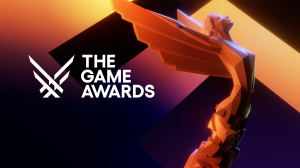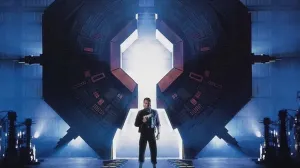
The Fantastic Four finally returned to the ranks of Marvel Comics this week in spectacular fashion. It is a team that has been at the very heart of the Marvel universe and everything it stands for, from launching the publisher into superhero success to the recent multiversal event Secret Wars. There is no coincidence about this title being so important to the entire shared universe and it hosting some of Marvel’s greatest creators across the years either.
Videos by ComicBook.com
From its very first issue through today, Fantastic Four (and variants like FF) have always played host to incredible artists, writers, inkers, and more. Now with a new #1 issue, writer Dan Slott and artist Sara Pichelli seek to join their ranks and reposition Fantastic Four as a top comic book.
Before they do so, it’s worth looking back at almost 60 years of stories to discover who the most significant Fantastic Four creators are. We’ve reviewed the catalog and assembled a list of the 10 people who have told the best Fantastic Four stories across the years. They may not all be the most influential, but it’s impossible to deny they are some of the greatest superhero storytellers of all time.
Look ahead to find out who they are in chronological order of Fantastic Four, along with some recommendations on where to start checking out their excellent work.
Jack Kirby

Fantastic Four (vol. 1) #1-102, 108 and Fantastic Four Annual (vol. 1) #1-6
It’s not just chronological order, when talking about the Fantastic Four you have to begin with the “King of Comics.” Reading Kirby’s complete run on the series provides a look into the rapid growth of both Marvel Comics and the development of the greatest pop artist of the 20th century. Every issue delivers new inventions with a story that expands in every issue. New characters, ideas, and storytelling techniques are constantly emerging in what is still a masterclass of comics artistry.
Recommended Reading: “The Galactus Trilogy” Fantastic Four (vol. 1) #48-50
Stan Lee

Fantastic Four (vol. 1) #1-114, 120-125, 296 and Fantastic Four Annual (vol. 1) #1-6
You can’t mention Jack without Stan though, Kirby’s co-plotter and writer for the series. It was Lee who helped develop the iconic personalities of the quartet and many of their greatest allies and adversaries, including the grandiose nature of Doctor Doom and forlorn wanderings of the Silver Surfer. Lee made Fantastic Four the center of the Marvel universe and helped realize the accolade he bestowed upon it early in the run: “World’s Greatest Comic Magazine!”
Recommended Reading: “This Man… This Monster!” Fantastic Four (vol. 1) #48-50
John Byrne

Fantastic Four (vol. 1) #209-218, 220, 221, 232-293 and Fantastic Four Annual (vol. 1) #17, 19
Following the departure of Kirby, Fantastic Four lost a step and struggled to find the same level of creativity until the arrival of John Byrne. As both a writer and artist he ushered in a new golden age for the series, providing some much needed updates while also summoning an incredible new array of stories that continued to build upon the past rather than repeat it. Byrne has crafted runs on many of the world’s most popular superheroes, but Fantastic Four stands above them all.
Recommended Reading: “The Trial of Reed Richards” Fantastic Four (vol. 1) #262
Walt Simonson

Fantastic Four (vol. 1) #334–341, 343–350, 352–354
Simonson’s relatively short run on Fantastic Four isn’t as well remembered as his definitive work on Thor. However, these issues pack all of the wild energy and twists that came to define his career elsewhere. Time travel and unexpected pairings made for some of the most exciting Fantastic Four stories of the decade. It was a run cut too short, but also one that will still get fans smiling today.
Recommended Reading: “The Mesozoic Mambo” Fantastic Four (vol. 1) #345-346
Mike Wieringo

Fantastic Four (vol. 2) #13, Fantastic Four (vol. 3) #60-64, 67-70, Fantastic Four (vol. 1) #500, 509-513, 517-524, and Spider-Man and The Fantastic Four (vol. 1) #1-4
The clarity and wonder of Wieringo’s cartooning cannot be understated, and it was exactly what Fantastic Four needed in this period. He helped to deliver a vision of the family that resonated with all ages of Marvel Comics readers, and pushed beyond nostalgia while honoring the core tenets of the series. Any issue drawn by Wieringo could move between jaw-dropping action and tear-inducing family reunions in just a few panels, making his tremendous talent obvious.
Recommended Reading: “Hereafter” Fantastic Four (vol. 1) #509-511
Mark Waid

Fantastic Four (vol. 3) #60-70 and Fantastic Four (vol. 1) #500-524
Waid was Wieringo’s partner in crime on this run, and no pairing of creators had been more successful on Fantastic Four since Kirby and Lee. Waid’s loving and detailed knowledge of the past allowed them to play on old tropes while adding an updated sense of humor and altering the stakes. Waid’s work remains the best modern introduction to the core dynamics of this family and the way their world functions.
Recommended Reading: “24 Blocks and One Blockhead” Fantastic Four (vol. 3) #61
Dwayne McDuffie

Fantastic Four (vol. 1) #542-553
McDuffie provided another run that was cut too short during a transitional period both for Fantastic Four and Marvel Comics. His “new” version of the team featuring Black Panther and Storm went on some truly amazing adventures, without ever losing track of the idea that the family and their story are always moving forward and growing together. McDuffie’s issues provide a relatively quick read, but one well worth revisiting.
Recommended Reading: “Epilogue” Fantastic Four (vol. 1) #551-553
Jonathan Hickman

Fantastic Four (vol. 1) #570-588, 600-611 and FF (vol. 1) #1-23
Hickman’s extensive run on Fantastic Four is best remembered for his expansive take on the team. He regularly invented new concepts, like The Council of Reeds, and kept building them all into a much grander plot that would eventually lead to his Avengers and the Secret Wars event. However, Hickman never lost track of the heart of the Fantastic Four and brilliantly presented the found family concept in the pages of a new series that showed off the Future Foundation: FF.
Recommended Reading: “Uncles” Fantastic Four (vol. 1) #588
Mike Allred

FF (vol. 2) #1-16
Allred’s stint of the second volume of FF barely shows the original members of the Fantastic Four, but it captures the love and found family concept beautifully. The extensive cast present a massive range of personalities and challenges, all of whom support one another and grow better together. It is a series that doesn’t shy away from difficult topics, but also helps readers understand them with the realistic optimism that has been part of this team from day one.
Recommended Reading: “The Possible Boy” FF (vol. 2) #11
James Robinson

Fantastic Four (vol. 5) #1-14, Fantastic Four Annual (vol. 5) #1, and Fantastic Four (vol. 1) #642-645
Robinson has the unenviable task of carrying the Fantastic Four until a long-planned cancellation with the start of Secret Wars. Even knowing that he managed to fuse so many of the great elements from prior runs into a very underrated take on the family. A large cast, inventive villains, and focus on how the team cares for one another allowed Fantastic Four to go out on a high note before its inevitable return.
Recommended Reading: “Back in Blue” Fantastic Four (vol. 5) #14








